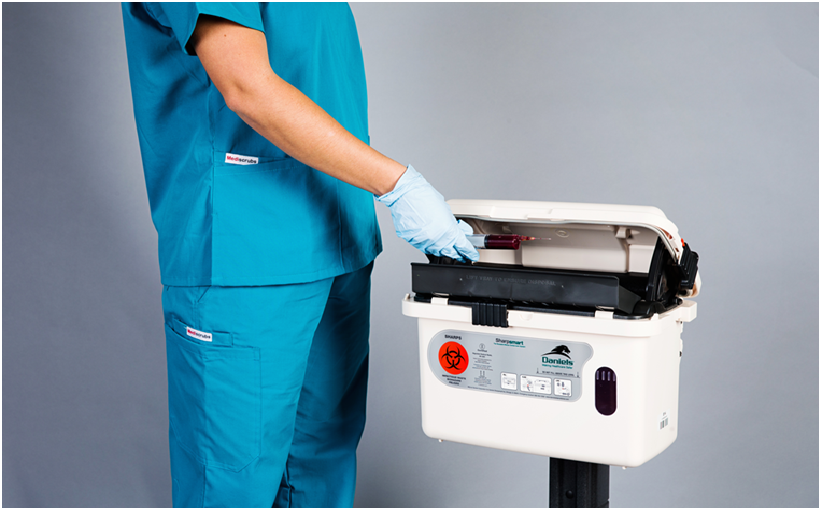Health care providers routinely have to contend with the arduous and demanding task of biohazardous waste disposal. Its competent management is absolutely integral to avert the adversity of disease transmission as well as air and water pollution.
Medical and biohazardous waste are contaminated and potentially infectious by-products of medical research, diagnostics, and treatments or other healthcare-related procedures.
The categories of the common medical and biohazardous waste as identified by the World Health Organization (WHO) are:
- Sharps – anything that can pierce the skin
Example: needle, lancet, scalpels, broken glass
- Infectious Waste – contaminated and potentially virulent materials
Example: medical supplies or equipment contaminated by human or animal tissues or fluids
- Radioactive – products that have been contaminated with radionuclide including radioactive diagnostic or radiotherapeutic materials
- Pathological – tissues or fluids from human or animal bodies
Example: blood, secretions, body parts, animal carcasses
- Pharmaceuticals – medications, either in oral or intravenous/muscular forms and vaccines that were unused, expired or contaminated
- Chemical – solutions or solvents used or derived from laboratory procedures; batteries or heavy metals from medical and surgical equipment
- Genotoxic Waste – known to be the most hazardous of all medical wastes; studies have concluded that they may be carcinogenic, teratogenic or metagenic
- Non-Hazardous Waste or General Non-Regulated Medical Waste – no physical, chemical, biological or radioactive dangers are posed by them
Dangers of Medical and Biohazardous Waste
Unsatisfactorily handled, medical and biohazardous waste can give rise to epidemics by transmitting the infection to health facility patients, health professionals and the population in general. In the same manner, drug-resistant viruses or bacteria and air or water pollution which may be disseminated from medical facilities to the environment.
The following can result from deficient medical and biohazardous waste disposal:
- sharps-inflicted wounds
- infectious, pharmacological or radioactive toxicity
- air and water pollution
- chemical or radioactive burns
Efficiency in the Handling of Medical and Biohazardous Waste
Prevent medical and biohazard waste accidents by complying with:
- Healthcare Waste Laws – it is imperative for health care professionals to have ample knowledge and to follow all the guidelines set by government agencies on handling hazardous waste
- Classification of medical wastes – wastes should be identified for proper classification prior to disposal
- Segregation of medical waste by categories – categorize and segregate waste into their respective containers
- Specific use of waste containers – use only the correct and specialized container for every waste category
- Proper sealing and storage of waste containers – practice the appropriate way of storing and shipping waste containers to avoid contamination of other objects
- Documentation and labeling of the containers – tags and markings on the containers counter unnecessary mistakes
Retain the services of an accredited and reliable waste disposal company – Daniels Health Medical & Biohazardous Waste Disposal in Utah will take care of your biohazardous waste efficiently and in accordance with laws and regulations. You can be secure in the fact that your medical wastes are strictly and safely handled and disposed posing no risk to lives or the environment.



